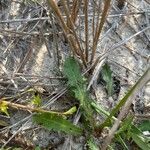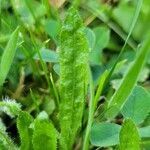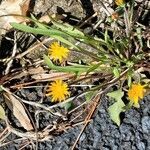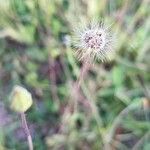Slender annual 3–40 dm, scapose or leafy only near the base, the several scapes or scapiform peduncles generally spreading-glandular-hairy above, sometimes throughout; lvs linear to oblanceolate or obovate, 1.5–12 cm × 1–12 mm, entire to pinnatifid, loosely villous-hirsute to glabrous, the hairs sometimes glandular; invol 4–7 mm, its (5–)9–18 bracts lanceolate or narrower, reflexed in age, not keeled or ribbed; pappus of 5 short, thin scales alternating with as many scabrous bristles several times as long; 2n=10, 20. Sandy places; Me. and Vt. to Wis., s. to Fla. and Tex. Mar.–July.




